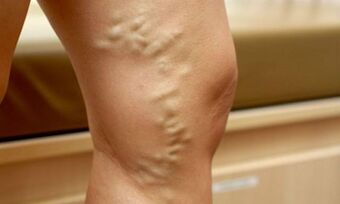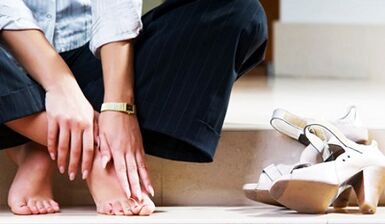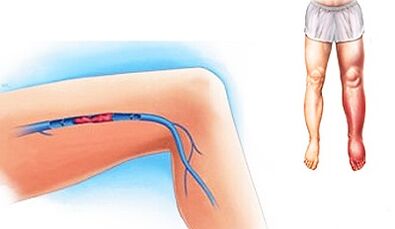
Like any organ in the human body, the circulatory system requires continuous training and a healthy tone.The heart performs the function of a pump in the body, but over time, especially if the tone of the venous device decreases, it is becoming increasingly difficult to achieve its function.
The valve located on the wall of the vein is weak and completely closed, and blood begins to stagnate in the vein.Therefore, they expand more and appear, which is a vicious cycle.
Defects in the venous system are usually observed in the lower part of the human body.This positioning is explained by the influence of gravity.It is the hardest thing to "draw" blood.Several groups of diseases were distinguished: swelling of the pelvic veins, varicose veins on the legs and varicose veins in the uterine veins.
The symptoms were completely different in each group.Changes can be observed both in the surface of the lower limbs and in the deep veins.In addition, damage to the surface container was detected in the primary stage.
There are many factors that suggest varicose veins: swelling on the legs, “severity” of the legs, bursting, burning.All of these symptoms unite one attribute so that you can understand that these are varicose veins - the symptoms of the early developmental stages disappear without traces.
Causes of varicose veins
What are the main reasons for changing the lower limb veins?Varicose veins are more acquired than genetics.Although there are some families, each generation has symptoms of lower limb varicose veins.However, there is still no consensus on the tendency to be hereditary.
Standing on the legs for a long time can stimulate the appearance of varicose veins.

The main risk factors for this disease are: obesity, work characteristics (often observed by people who have to stand for a long time during workdays), lifting weights, wearing narrow, squeezed clothing.
If you are in the risk group, you need to monitor your condition carefully and consult your doctor right away when the first symptom of varicose veins appears.
As mentioned above, the first manifestation of the disease may be associated with nocturnal fatigue in the legs.This happens because in the morning, all the unpleasant manifestations pass.A person feels rested and cannot see the reason for attention.
Symptoms of varicose veins in the lower limbs
It is this fact that varicose veins in the lower limbs can be diagnosed for decades - it is difficult to identify symptoms at an early stage.Let's take a look at them in more detail.
pain
This is definitely anything from mild discomfort to a state where pain medication is required.The nature of pain may also be different: burning and soreness, pain and nighttime twitching, pain when walking or along the entire length of the boat.
Any pain in the legs, which has nothing to do with the injury, should make you think you don’t think there are symptoms of lower limb varicose veins.
Similarly, in the manifestations of varicose swelling, the following can be destined:
- The appearance of edema in the evening.
- The feeling of "severity" was ruptured in the legs.
- Another important thing about deep veins in the lower limbs is skin changes.The skin becomes land, and age spots occur, which can further increase and lead to the development of nutritional ulcers.
- The pattern of small blood vessels on the skin manifests itself on the skin.The reason for this is the same - the vein is enlarged and more pronounced.
- In the later stages of disease development, leg and foot veins with various forms of stretching can be observed.This is the main varicose veins with symptoms - treatment should be started immediately!
Development stage
The manifestations of the disease can be separated in stages:
- Phase 1 - Cosmetic defects become apparent.
- Phase 2 - Discomfort at night.
- Stage 3 - Swelling, pigmentation, bursting legs.
- Stage 4 - Nutritional ulcers will appear.
After discovering any major signs of yourself, you need to do a venous varicose vein immediately - the symptoms themselves won't go away.
The disease itself will not disappear.If the disease is tightened, serious complications can occur because of thrombophlebitis, thrombosis and venous bleeding.
Possible complications

Thrombosis (complete overlap of venous channels) and thrombotic varicose veins (inflammatory of venous walls) are severe conditions that can lead to limb loss in adverse circumstances (in adverse circumstances).
Varicocele can cause thrombosis.
Acute unbearable pain occurs, and the skin color may change (turn red or blue), and its superficial pain can be observed.
In the case of isolated thrombosis, the entire organism has been exposed to danger, and in the case of thromboembolic (vascular obstruction), the lung or other important blood vessels may cause death.
Treatment is prescribed by a doctor.If the first suspect is on varicose veins in the lower limb or pelvis, you must seek help.
A qualified phlebotomist will prescribe medications, the right combination of traditional medicine, and will also provide key advice for lifestyle changes.After all, it is the main factor in the development of the disease.

















